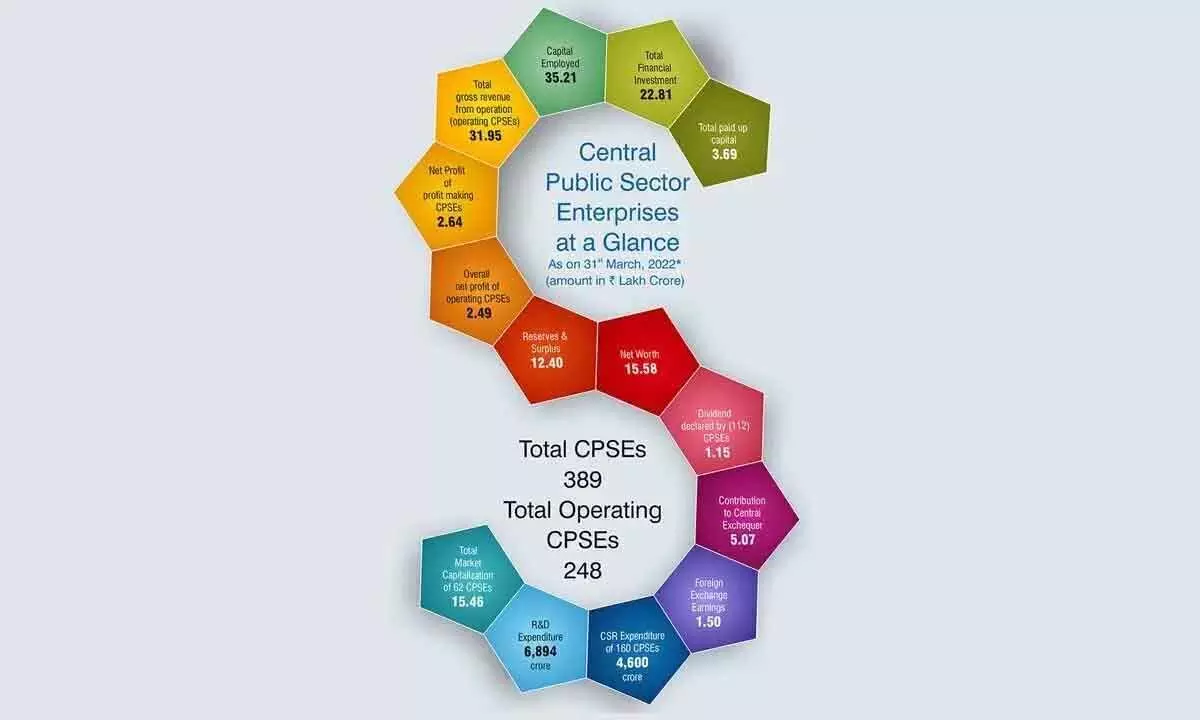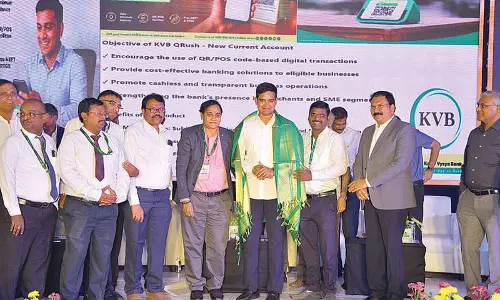More vibrant CPSEs pivotal for India’s multi-faceted development

There is huge scope for further improvement, expansion and diversification of CPSEs
The Central Public Sector Enterprises (CPSEs) have been playing a critical role in India’s economic development since the very beginning. Today they are one of the most important tools to drive our economic odyssey in a sustainable manner.
In 1951, there were only five public sector undertakings (PSUs). As on March 3, 2015, there were 298 CPSEs with a total paid up capital of Rs. 2,13,020 crore as compared to Rs. 1,98,722 crore as on March 31, 2014 (290 CPSEs), showing a growth of 7.19 per cent. The total investment (equity plus long loans) in all CPSEs stood at Rs. 10,96,057 crore as on March 31.3.2015 as compared to Rs. 9,92,096 crore as on March 31, 2014, recording a growth of 10.48 per cent.
As per the Public Enterprises (PE) Survey 2019-20, the total paid-up capital in all CPSEs as on 31.3.2020 stood at Rs. 3,10,737 crore, while total financial investment was pegged at Rs. 21,58,877 crore. Profit of 171 profit-making CPSEs stood at Rs. 1,38,112 crore in the financial year 2019-20, while the loss of 84 loss-making CPSEs was Rs. 44,817 crore. According to the Public Enterprises Survey 2021-22, the total paid up capital of all CPSEs was Rs. 3.69 lakh crore as on March 31, 2022 as against Rs. 2.84 lakh crore on March 31, 2021, showing an increase of 29.82 per cent. Net profit of profit-making CPSEs stood at Rs. 2.64 lakh crore in FY 2021-22 as against Rs. 1.89 lakh crore in FY 2020-21, registering an increase of 39.85 per cent.
The top five CPSEs with the highest net profit are ONGC Limited, Indian Oil Corporation (IOC), Power Grid Corporation of India (PGCI), NTPC Limited and Steel Authority of India Limited (SAIL). Similarly, the net loss of loss-incurring CPSEs was Rs. 0.15 lakh crore in FY 2021-22 as against Rs. 0.23 lakh crore in FY 2020-21, showing a decrease of 37.82 per cent.
Major loss-making CPSEs were BSNL, MTNL, Air India Assets Holdings Limited, Eastern Coalfields Ltd, and Alliance Air Aviation Ltd.
In FY 2022-23, there were 402 total CPSEs out of which 254 were operational. According to PE Survey 2022-23, the total paid-up capital of all CPSEs was Rs. 5.05 lakh crore as on March 31, 2023 as against Rs. 3.59 lakh crore on March 31, 2022, showing an increase of 40.85 per cent. Net profit of profit-making CPSEs stood at Rs. 2.41 lakh crore in FY 2022-23 against Rs. 2.64 lakh crore in FY 2021-22, showing a decrease of 8.88 per cent. The top five CPSEs with the highest net profits in FY 2022-23 were ONGC Ltd, NTPC Ltd, Power Grid Corporation of India, Coal India Ltd, and Mahanadi Coalfields Ltd.Net loss of loss-incurring CPSEs was Rs. 0.29 lakh crore in FY 2022-23 as against Rs. 0.15 lakh crore in FY 2021-22, showing an increase of 97.31 per cent. Major loss-making CPSEs were HPCL, BSNL, MTNL, RashtriyaIspat Nigam Ltd and Bharat Petro Resources Ltd.
Most CPSEs operate in areas such as agro-based industries, chemicals and pharmaceuticals, coal, crude oil, defence production, fertilizers, financial services, heavy and medium engineering, industrial and consumer goods, petroleum refinery and marketing, power generation and transmission, steel, telecommunication and information technology. No doubt CPSEs are doing a great job but there is a huge scope for further improvement, expansion and diversification. For example, loss making entities should be revamped and made more competitive. By further ensuring and amplifying the spirit of accountability, CPSEs can do wonders. Similarly, they should foray into emerging areas.
According to a report by Teamlease Services, growing at 14.93 per cent compound annual growth rate (CAGR) between 2020 and 2023, the FMCG market in India stood at $167 billion in 2023. The size is further expected to grow to $192 billion by the end of 2024 and reach $220 billion in 2025. It is worth noting that the Fast-Moving Consumer Goods (FMCG), which includes products like food items, personal care and cleaning products, among others, is regarded as the fourth largest sector of the Indian economy. The service sector makes up more than 50 per cent of the country’s gross domestic product (GDP) and remains the fastest growing sector. The industrial and agricultural sectors employ a majority of the labour force. Textiles, jute, sugar, cement, paper, automobiles, and IT are some other areas where we can have more CPSEs.
In a country like ours where there is so much income and wealth disparities, we cannot kill government-owned entities and fully depend upon the private sector players. Privatisation does not mean death-knell for CPSEs but also an opportunity for them to rise to the occasion and compete with their rivals. It is so painful to see the slow and steady death of BSNL, MTNL and Air India. It is just because of lack of professionalism and accountability, which marred the prospects of some CPSEs, which were otherwise blessed with unlimited potential for growth.
As per an official assessment, the public procurement as a percentage of gross domestic product (GDP) in the country is estimated between 20 per cent and 22 per cent. The share of the gross turnover of CPSEs to the GDP of India at current prices is said to be around 15 per cent to 16 per cent. The Union Government wants all CPSEs to double their contribution to the GDP and be the ‘third major source’ of revenue for the Centre after direct and indirect taxes. If CPSEs rise to the occasion in the right spirit and pace, they can reduce the country’s import bill significantly.
According to the Union Ministry of Commerce and Industry, overall trade deficit improved by 35.77 per cent from $121.62 billion in FY 2022-23 to $78.12 billion in FY 2023-24.
Last but not the least, there is also a social aspect attached with the growth of CPSEs when the country is grappling with acute income and wealth disparities. CPSEs can effectively bridge the disparities by promoting economic inclusivity through stable employment opportunities, often in underdeveloped regions, and in the process reducing regional inequalities. They also contribute significantly to social infrastructure including education, healthcare, and rural development. CPSEs ensure equitable distribution of resources and services, counterbalancing the private sector’s profit-driven approach, which often exacerbates wealth concentration.
There is no room for doubt that CPSEs serve as a vital mechanism for achieving social equity and sustainable development in India.














